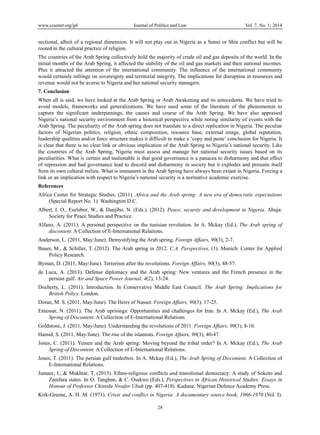Dutch Housing Crisis: The Challenges Of Repurposing Vacant Commercial Properties

Table of Contents
Regulatory Hurdles and Planning Permission
Repurposing commercial properties for residential use in the Netherlands is fraught with regulatory complexities. Navigating the system requires significant time, resources, and expertise.
Navigating Complex Building Codes and Regulations
Dutch building codes and planning permissions are notoriously stringent. Converting a commercial space into residential housing necessitates meticulous attention to detail and often involves extensive paperwork.
- Strict Adherence to Safety Regulations: Meeting fire safety standards, ensuring accessibility for people with disabilities, and complying with energy efficiency regulations are paramount and often require substantial modifications.
- Environmental Impact Assessments and Sustainability Requirements: Environmental considerations are central to the Dutch planning process. Projects must undergo thorough environmental impact assessments, often leading to delays and added costs. Meeting sustainability targets, such as those outlined in the national energy transition plan, is also crucial for approval.
- Obtaining Necessary Permits from Multiple Local Authorities: Securing the required permits often involves navigating multiple local authorities, each with its own specific requirements and timelines. This fragmented process can significantly prolong the project timeline.
Zoning Restrictions and Land Use Planning
Many commercial properties are situated in areas zoned exclusively for commercial use. Converting these spaces into residential units requires overcoming significant zoning hurdles.
- Engaging with Local Municipalities to Initiate Zoning Changes: This process can be lengthy and politically challenging, demanding strong justification for the conversion. Demonstrating a clear public benefit is essential.
- Demonstrating the Public Benefit of Converting Commercial Spaces into Housing: Arguments for conversion should focus on addressing the housing shortage, contributing to local economic development, and enhancing the quality of life in the area.
- Addressing Potential Concerns from Residents and Businesses in the Surrounding Area: Proactive community engagement is vital. Addressing potential concerns related to increased density, parking, noise pollution, and changes to the neighborhood character is crucial for garnering local support.
Financial and Economic Considerations
The financial aspects of repurposing commercial properties for housing are significant. High conversion costs and securing financing represent considerable challenges.
High Conversion Costs
Repurposing commercial buildings frequently requires substantial investment. The costs involved can quickly escalate, impacting the overall feasibility of the project.
- The Age and Condition of the Building: Older buildings may require extensive structural repairs, potentially increasing costs substantially.
- The Scale of the Renovation Project: Larger projects inherently involve higher costs, encompassing everything from demolition and construction to new installations and finishing work.
- The Need for Specialized Contractors and Expertise: Converting commercial spaces often demands the skills of specialized contractors familiar with building regulations and the specific challenges of repurposing projects.
Return on Investment and Financing
Securing the necessary funding for these projects can be difficult, requiring robust financial planning and risk assessment.
- Assessing the Potential Rental Income and Property Value After Conversion: A thorough market analysis is essential to determine the potential rental income and the likely increase in property value post-conversion. This information is crucial for attracting investors.
- Finding Investors Willing to Undertake the Risk Associated with Repurposing Projects: Investors often need reassurance regarding the project's financial viability, requiring detailed feasibility studies and risk mitigation strategies.
- Exploring Government Grants and Subsidies Available for Sustainable Housing Initiatives: Several government programs offer grants and subsidies to encourage sustainable housing development. Exploring these options is essential for securing funding.
Social and Community Impacts
The social and community impacts of repurposing commercial properties are multifaceted and require careful consideration.
Addressing Community Concerns
Repurposing projects can face resistance from local communities. Addressing these concerns proactively is critical to project success.
- Engaging with Community Members Early in the Planning Process: Open communication and transparency from the outset can build trust and garner support. Regular consultations and feedback sessions are invaluable.
- Addressing Their Concerns Transparently and Proactively: Openly acknowledging and addressing concerns about increased density, parking, noise, and changes to the neighborhood character helps mitigate potential opposition.
- Incorporating Community Feedback into the Design and Development of the Project: Integrating community suggestions into the project's design demonstrates responsiveness and strengthens community support.
Creating Sustainable and Inclusive Communities
Successful repurposing can create vibrant, mixed-use communities offering diverse housing options and services.
- Creating High-Quality, Affordable Housing Units: Prioritizing the creation of affordable housing units ensures the project benefits a broad range of residents.
- Incorporating Green Spaces and Community Amenities: Including green spaces and community amenities enhances the quality of life and fosters a sense of community.
- Fostering a Sense of Community Among Residents: Implementing initiatives that promote social interaction among residents helps build a cohesive and inclusive community.
Conclusion
Repurposing vacant commercial properties offers a significant opportunity to tackle the Dutch housing crisis. While regulatory hurdles, financial constraints, and community concerns present challenges, proactive planning, transparent community engagement, and innovative financing strategies can unlock a substantial supply of much-needed housing. Effective collaboration between government agencies, developers, investors, and local communities is essential. By working together and embracing creative solutions, we can successfully utilize vacant commercial spaces to alleviate the pressure of the Dutch housing crisis and create more sustainable and inclusive communities. Let's explore the potential of repurposing vacant commercial spaces as a crucial strategy to tackle the Dutch housing crisis and create more sustainable and affordable living spaces for all.

Featured Posts
-
 Personal Loans With Guaranteed Approval For Bad Credit Up To 5000
May 28, 2025
Personal Loans With Guaranteed Approval For Bad Credit Up To 5000
May 28, 2025 -
 The Last Of Us Season 2 Shifting Perspectives And Narrative
May 28, 2025
The Last Of Us Season 2 Shifting Perspectives And Narrative
May 28, 2025 -
 Winning Euro Millions Ticket Await Claim From Irish Shop Purchase
May 28, 2025
Winning Euro Millions Ticket Await Claim From Irish Shop Purchase
May 28, 2025 -
 Countering Chinas Naval Rise The U S Unveils A New Missile System
May 28, 2025
Countering Chinas Naval Rise The U S Unveils A New Missile System
May 28, 2025 -
 Sled Teylr Suift Khyu Dzhakman Zamesen V Skandala Mezhdu Bleyk Layvli I Dzhstin Baldoni
May 28, 2025
Sled Teylr Suift Khyu Dzhakman Zamesen V Skandala Mezhdu Bleyk Layvli I Dzhstin Baldoni
May 28, 2025
Latest Posts
-
 Spring 2024 A Historical Echo And Its Significance For Summer Drought
May 31, 2025
Spring 2024 A Historical Echo And Its Significance For Summer Drought
May 31, 2025 -
 Wherry Vets Bungay Planning Bid Approved
May 31, 2025
Wherry Vets Bungay Planning Bid Approved
May 31, 2025 -
 Metro Detroit Weather Mondays Cool Temperatures And Sunshine
May 31, 2025
Metro Detroit Weather Mondays Cool Temperatures And Sunshine
May 31, 2025 -
 Could Spring 2024 Mirror 1968s Drought Conditions A Summer Forecast
May 31, 2025
Could Spring 2024 Mirror 1968s Drought Conditions A Summer Forecast
May 31, 2025 -
 1968 And 2024 Springs Similarity And Its Implications For Summer Drought
May 31, 2025
1968 And 2024 Springs Similarity And Its Implications For Summer Drought
May 31, 2025
